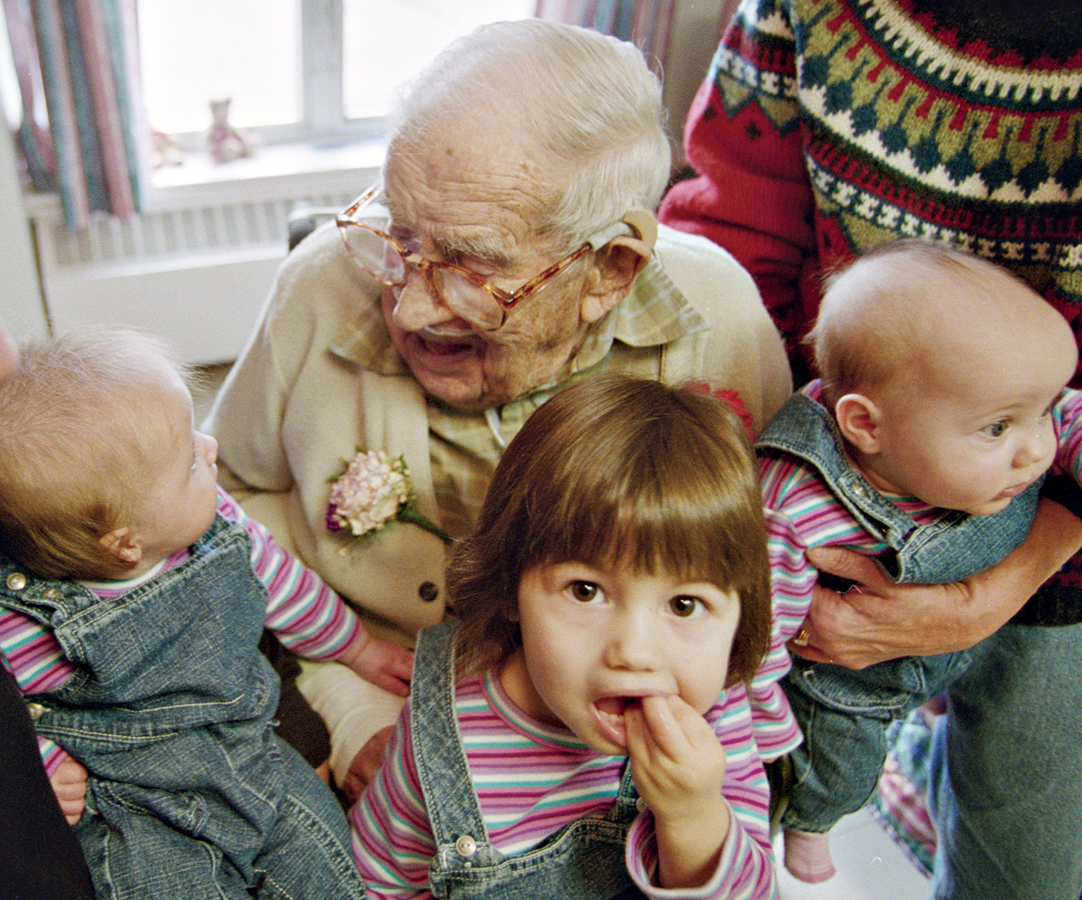 The Centenarians
The Centenarians
There is one more source of knowledge about longevity: people who live a long time. Do they do something that others do not?
Far from Modern Life and Times
In the 1970s, three remote places—
Most of the aged [older than age 90] work regularly…. Some even continue to chop wood and haul water. Close to 40 percent of the aged men and 30 percent of the aged women report good vision; that is, that they do not need glasses for any sort of work, including reading or threading a needle. Between 40 and 50 percent have reasonably good hearing. Most have their own teeth. Their posture is unusually erect, even into advanced age. Many take walks of more than two miles a day and swim in mountain streams.
[Benet, 1974]

THE ASAHI SHIMBUN/GETTY IMAGES
More comprehensive studies (Pitskhelauri, 1982; Buettner, 2008) found that lifestyles in all three of these regions were similar in four ways:
- Diet. People ate mostly fresh vegetables and herbs, with little meat or fat. They thought it better to be a little bit hungry than too full.
- Work. Even the very old did farm work, household tasks, and child care.
- Family and community. The elderly were well integrated into families of several generations and interacted frequently with friends and neighbors.
- Exercise and relaxation. Most took a walk every morning and evening (often up and down mountains), napped midday, and socialized in the evening.
Perhaps these factors—
The theory that the social context promotes longevity is buttressed by evidence from bumblebees. Genetically, worker bees and queen bees are the same, but worker bees live about three months while queen bees, fed special food and treated with deference, live about five years. When a queen dies, a worker bee is chosen to become a queen, thereby living 20 times longer than that bee otherwise would have.
Maximum Life Expectancy

Surely your suspicions were raised by the preceding paragraphs. Humans have almost nothing in common with bumblebees, and the information about those long-
Indeed, the three regions famous for long-
As for preventing the ills of old age, it does seem that exercise, diet, and social integration add a few years to the average life—
maximum life span The oldest possible age that members of a species can live under ideal circumstances. For humans, that age is approximately 122 years.
Genes seem to bestow on every species an inherent maximum life span, defined as the oldest possible age that members of that species can attain (Wolf, 2010). Under ideal circumstances, the maximum that rats live seems to be 4 years; rabbits, 13; tigers, 26; house cats, 30; brown bats, 34; brown bears, 37; chimpanzees, 55; Indian elephants, 70; finback whales, 80; humans, 122; lake sturgeon, 150; giant tortoises, 180.
average life expectancy The number of years the average newborn in a particular population group is likely to live.
Maximum life span is quite different from average life expectancy, which is the average life span of individuals in a particular group. In human groups, average life expectancy varies a great deal, depending on historical, cultural, and socioeconomic factors as well as on genes (Sierra et al., 2009).
In the United States the average has doubled in the past century and continues to rise. In 2012, average life expectancy at birth was about 76 years for men and 81 years for women. That is four years longer than it was 30 years ago, and it is projected to be another five years longer in 2050 (United Nations, 2012).
In most of the twentieth century, dramatic increases in average life expectancy in every nation occurred because public health measures (clean water, immunization, and so on) prevented the deaths of many infants and children. Recent increases in life expectancy are attributed to the reduction in deaths in middle age from adult diseases (heart attack, pneumonia, cancer, etc.). The average has increased; the maximum probably has not.
Now the challenge is to increase the life span of the very old. Gerontologists are engaged in a “fiery debate” as to whether the average life span will keep rising, and whether the maximum is genetically fixed (Couzin-
Everyone agrees, however, that the last years of life can be good ones. Those who study centenarians find many quite happy (Jopp & Rott, 2006; Paúl et al., 2013). Jeanne Calment enjoyed a glass of red wine and some olive oil each day. “I will die laughing,” she said.
Disease, disability, depression, and dementia may eventually set in; studies disagree about how common these problems are past age 100. Some studies find fewer physical and mental health problems after age 100 than before. For example, in Sweden, where medical care is free, centenarians were less likely to take antide-
Could centenarians be happier than octogenarians, as these Swedish data suggest? That is not known. However, it is true that more and more people live past 100, and many of them are energetic, alert, and optimistic (Perls, 2008; Poon, 2008). Social relationships in particular correlate with robust mental health (Margrett et al., 2011). Centenarians tend to be upbeat about life.
That could be considered the theme of this chapter: Attitude is crucial as senescence continues. As noted in the beginning of the chapter, ageism shortens life and makes the final years less satisfying. Don’t let it. As thousands of centenarians demonstrate, a long life can be a happy one.
SUMMING UP
Many scientists seek to understand why aging occurs. If senescence could be stopped or slowed down, all the diseases that increase with aging would be reduced as well. In general, the wear-